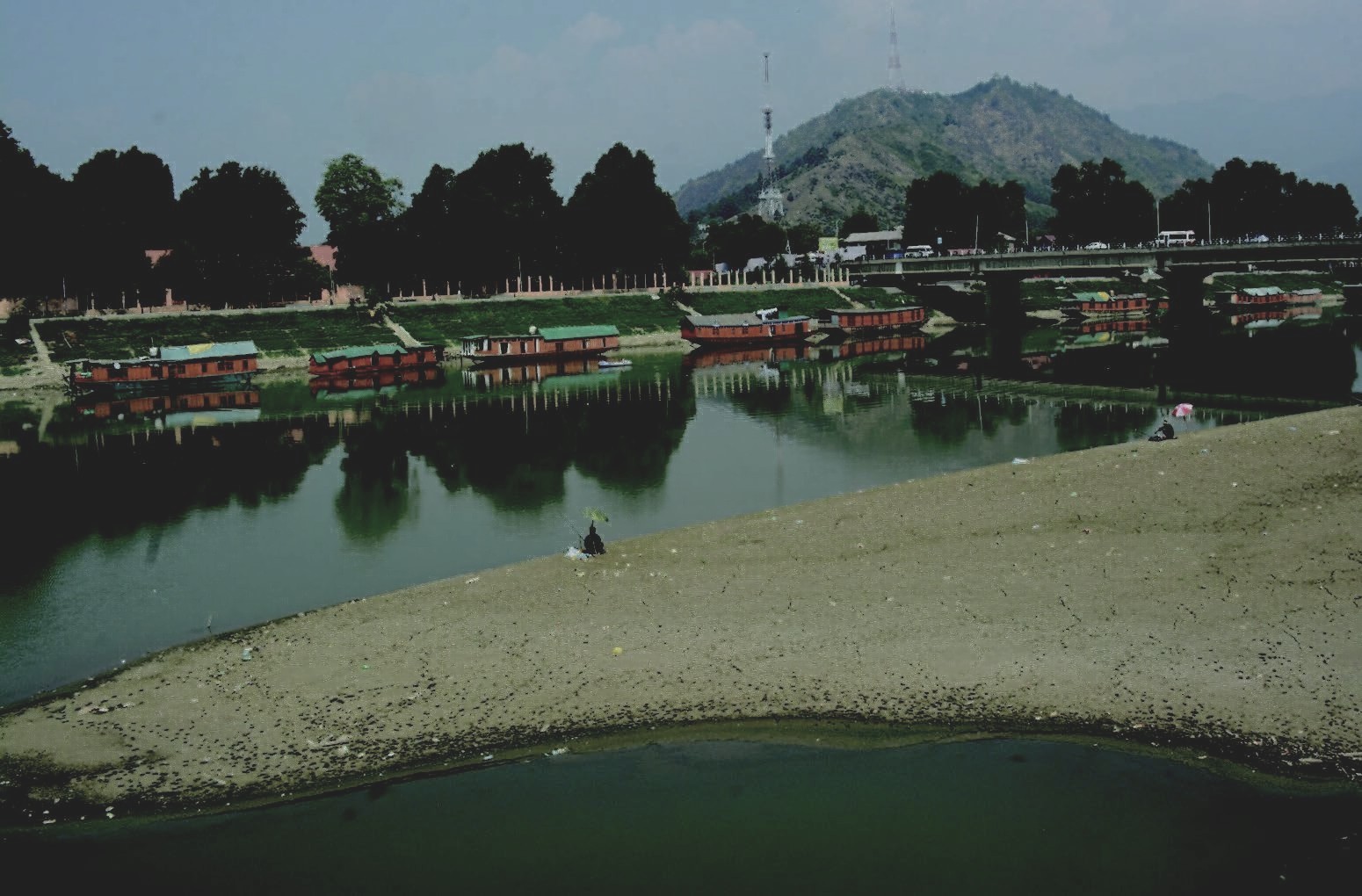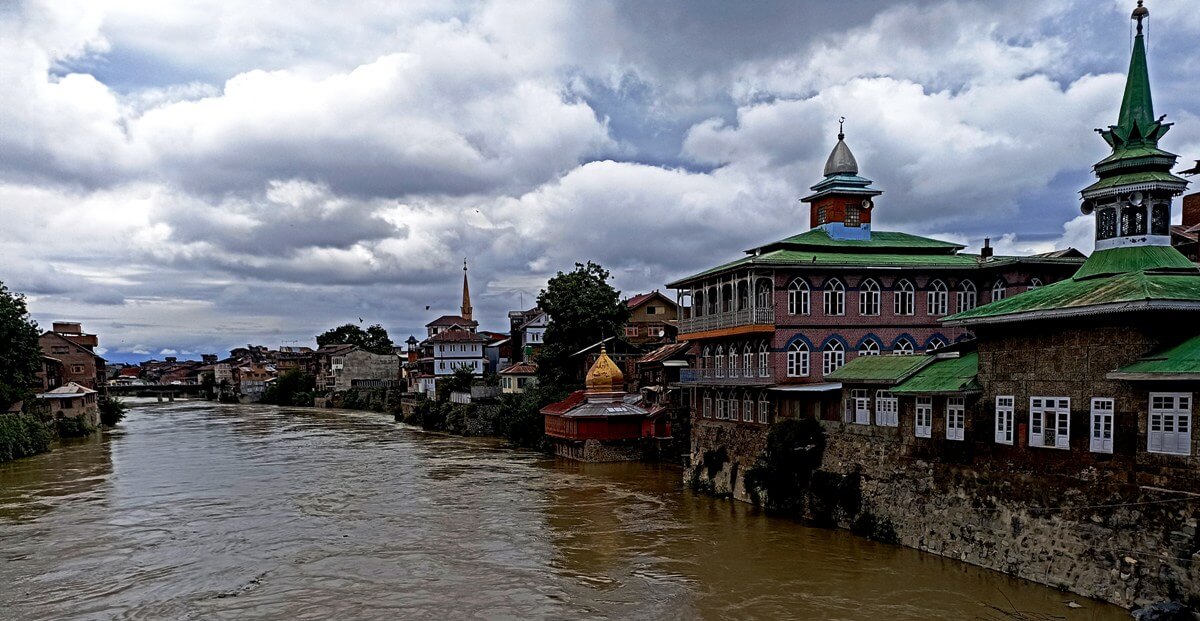Kashmir’s Climate Crisis: The Clock is Ticking Faster
By: Javid Amin
A Warming Paradise in Peril
Kashmir, often referred to as “Paradise on Earth,” is facing an unprecedented climate crisis. Once known for its harsh winters, heavy snowfall, and lush green landscapes, the region is now witnessing dramatic shifts in its weather patterns. The winter of 2024-25 has shattered previous records, with January and February experiencing temperatures far above historical norms. This alarming trend is not just a seasonal anomaly but a sign of deep-rooted climate change, threatening the region’s environment, agriculture, economy, and overall way of life.
Experts, including Prof. Shakil Romshoo, a renowned climate scientist and Vice-Chancellor of the Islamic University of Science and Technology (IUST), emphasize that Kashmir’s warming trend is not just a regional issue but a direct consequence of global climate change.
Rising Temperatures: The Harsh Reality
For decades, Kashmir has seen fluctuating winter temperatures, but the rapid acceleration of warming in recent years is cause for concern. According to Prof. Romshoo, while the region has been experiencing a gradual increase in winter temperatures since the 1960s, the past few years have witnessed an alarming escalation.
Key Observations:
- Unprecedented Winter Warmth: In early 2025, temperatures in Kashmir remained 6-7°C above the long-term average, making it one of the warmest winters on record.
- Shrinking Snowfall: February temperatures remained in double digits, a stark contrast to historical records when sub-zero temperatures and heavy snow were the norm.
- Global Context: According to Mukhtar Ahmad, Director of the Meteorological Department, Kashmir, January 2025 was the hottest January globally, with temperatures 1.75°C above pre-industrial levels, despite La Niña’s usual cooling influence.
- Comparative Data: When analyzed against climate records dating back to 1886, the warming trend in Kashmir is undeniable.
Why is Kashmir Warming So Fast?
The primary driver of Kashmir’s warming winters is global climate change, fueled by rising greenhouse gas emissions. However, the region’s unique geography and weather patterns also contribute to the crisis.
Factors Contributing to Kashmir’s Climate Shift:
- Greenhouse Gas Emissions: The burning of fossil fuels worldwide has significantly increased atmospheric CO2 levels, trapping heat and causing temperatures to rise.
- Altered Weather Patterns: Westerly and easterly air masses are transporting warmer air into Kashmir, disrupting traditional snowfall cycles.
- Rapid Glacier Melt: Himalayan glaciers, Kashmir’s primary water source, are losing mass at an alarming rate due to warming winters.
- Deforestation & Urbanization: Unregulated deforestation and unchecked urban expansion are altering the region’s natural cooling mechanisms.
Impact of Climate Change on Kashmir
1. Disappearing Glaciers: A Looming Water Crisis
Kashmir’s glaciers are melting earlier than usual, causing peak water availability to shift from June to May. If this trend continues, by the end of the century, peak runoff could occur as early as April, severely impacting agriculture, hydroelectricity production, and drinking water supplies.
- Significant Glacier Mass Loss: Data suggests that glaciers in Kashmir have lost substantial mass over the past few decades, a trend mirrored across the Himalayas.
- Reduced Snowfall: The absence of heavy snowfall is accelerating glacial retreat, further intensifying water scarcity concerns.
- Threat to Hydropower: Since Kashmir relies heavily on hydropower for electricity, reduced glacial runoff could disrupt energy supplies in the coming decades.
2. Agriculture and Horticulture in Peril
Kashmir’s economy is heavily reliant on agriculture, particularly water-intensive crops such as paddy and apples. Climate change is already disrupting traditional farming practices, leading to reduced crop yields and economic instability.
- Paddy Cultivation at Risk: Paddy farming in Kashmir requires steady water supply from June to September. However, with glaciers melting earlier, water shortages could devastate production.
- Apple Orchards in Trouble: Apple trees require adequate chilling hours to produce high-quality fruit. Warmer winters are reducing chilling periods, leading to premature bud sprouting and increased vulnerability to spring frosts.
- Erratic Rainfall: Farmers are struggling to cope with unpredictable rainfall patterns, which often result in floods or droughts, damaging crops and threatening food security.
3. Ecosystem Disruptions and Biodiversity Loss
Kashmir’s fragile ecosystems are struggling to adapt to the rapidly changing climate.
- Flora and Fauna at Risk: Warmer temperatures are causing shifts in plant blooming cycles and disrupting wildlife migration patterns.
- Invasive Species: Climate change is creating favorable conditions for non-native plant and insect species, which threaten local biodiversity and disturb the ecological balance.
- Lake and River Drying: Iconic water bodies like Dal Lake and Wular Lake are experiencing unprecedented evaporation rates, reducing their water levels and affecting local livelihoods dependent on fisheries and tourism.
A Call to Action: Solutions for Kashmir’s Climate Crisis
While climate change is a global phenomenon, local solutions can help mitigate its impact. Government policies, community action, and scientific innovation are crucial to securing Kashmir’s future.
1. Strengthening Climate-Resilient Agriculture
- Promoting drought-resistant crop varieties to adapt to erratic rainfall.
- Encouraging water-efficient irrigation techniques like drip irrigation.
- Supporting sustainable apple and saffron farming practices.
2. Glacier Protection & Sustainable Water Management
- Implementing strict glacier conservation programs.
- Constructing water reservoirs to store excess glacial runoff for summer use.
- Encouraging rainwater harvesting to reduce dependence on melting glaciers.
3. Renewable Energy Transition
- Investing in solar and wind energy projects to reduce reliance on hydroelectricity.
- Encouraging households and businesses to adopt solar-powered heating systems.
4. Forest Conservation & Afforestation
- Implementing reforestation programs to restore lost green cover.
- Strictly regulating deforestation and illegal logging.
- Encouraging eco-tourism to balance economic growth with environmental conservation.
5. Strengthening Climate Policy & Awareness
- Introducing stronger environmental protection laws.
- Educating farmers, students, and businesses about climate change adaptation strategies.
- Establishing climate research institutions to develop localized solutions.
Bottom-Line: The Time to Act is Now
Kashmir’s climate clock is ticking faster than ever. The once snow-clad valleys are now experiencing prolonged dry spells, and its rivers are shrinking while farmers struggle with unpredictable weather. If immediate action is not taken, the paradise that has inspired poets, travelers, and lovers for centuries may soon become unrecognizable.
The good news is that solutions exist, and through collective effort, policy changes, and environmental consciousness, we can slow down the impacts of climate change. Kashmir’s future depends on our willingness to act today. The responsibility lies not just with the government but with every individual, business, and organization to ensure that the next generation inherits a Kashmir that remains as breathtaking as ever.


